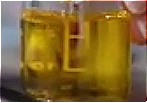Lactamide MEA (2-hydroxypropanamide) is a chemical compound, ethanolamide of lactic acid. Ethanolamides consist of carboxylic acid and amides.
MEA (2-aminoethanol) or Monoethanolamine belongs to the first generation of ethanolamines, is a primary amine and is a strongly alkaline agent, corrosion inhibitor and chemical intermediate.
The name defines the structure of the molecule:
- Lactamide refers to a compound that is derived from lactic acid, a substance that is naturally produced by the body and is also found in some foods. Lactic acid is often used in skin care products for its ability to exfoliate and moisturize the skin.
- MEA (2-aminoethanol) or Monoethanolamine belongs to the first generation of ethanolamines, is a primary amine and is a strongly alkaline agent, corrosion inhibitor and chemical intermediate. Monoethanolamine is often used in cosmetics and personal care products to help regulate the pH or acidity of the product.
The synthesis process takes place in several stages:
- Preparation. Lactic acid can be obtained from various sources, including the fermentation of carbohydrates. Monoethanolamine (MEA) is commercially available.
- Reaction. Lactic acid reacts with monoethanolamine (MEA) in a process known as amidation. This reaction can be catalyzed by heat and/or a catalyst. The reaction can be represented as follows:
C3H6O3 (lactic acid) + NH2CH2CH2OH (MEA) -> C3H7NO2 (lactamide MEA) + H2O (water)
- Water removal. The above reaction is an equilibrium reaction, which means that it can proceed in both directions back and forth. To guide the reaction to completion and that is, to maximize the production of lactamide MEA, the water produced in the reaction is often removed. This can be achieved through various methods, such as the use of a Dean-Stark apparatus or by carrying out the reaction under reduced pressure.
- Purification. MEA raw lactide product may contain unreacted lactic acid and MEA, as well as catalyst. Therefore, it must be purified to remove these impurities through various methods, such as distillation or extraction.
- Characterization. The final stage of the synthesis process is the characterization of the product to confirm its identity and purity through various methods, such as infrared spectroscopy (IR), nuclear magnetic resonance spectroscopy (NMR) and mass spectrometry (MS).
Lactamide MEA usually comes in liquid form and its color can vary from light to yellowish.

What it is used for and where
Cosmetics
Hair conditioning agent. A large number of ingredients with specific purposes can co-exist in a hair shampoo: cleansers, conditioners, thickeners, mattifying agents, sequestering agents, fragrances, preservatives, special additives. However, the indispensable ingredients are the cleansers and conditioners as they are necessary and sufficient for hair cleansing and manageability. The others act as commercial and non-essential auxiliaries such as: appearance, fragrance, colouring, etc. Hair conditioning agents have the task of increasing shine, manageability and volume, and reducing static electricity, especially after treatments such as colouring, ironing, waving, drying and brushing. They are, in practice, dispersing agents that may contain cationic surfactants, thickeners, emollients, polymers. The typology of hair conditioners includes: intensive conditioners, instant conditioners, thickening conditioners, drying conditioners.
Skin conditioning agent - Humectant. Humectants are hygroscopic substances used to minimise water loss in the skin and to prevent it from drying out by facilitating faster and greater absorption of water into the stratum corneum of the epidermis. The epidermis is the most superficial of the three layers that make up the human skin (epidermis, dermis and hypodermis) and is the layer that maintains hydration in all three layers. In turn, the epidermis is composed of five layers: corneum, the most superficial, lucidum, granulosum, spinosum and basale. Humectants have the ability to retain in the stratum corneum the water they attract from the air and have the function of moisturising the skin. It is better to use them before emollients that are oil-based.
Surfactant - Foam booster. Its function is to introduce gas bubbles into the water for a purely aesthetic factor, which does not affect the cleaning process, but only satisfies the commercial aspect of the detergent by helping to spread the detergent on the hair. This helps in the commercial success of a shampoo formulation. Since sebum has an inhibiting action on the bubble, more foam is produced in the second shampoo.
Viscosity Enhancing Agent - aqueous. Since viscosity is important for increasing the chemical and physical stability of the product, Viscosity Enhancing Agent acqueous is an important dosage factor in gels, suspensions, emulsions, solutions. Increasing viscosity makes formulations less sedimentary and more homogeneously thickened.
Safety
MEA should not be included in products formulated as aerosols and in products containing N-nitroso. Scientific literature agrees that MEA can penetrate and absorb into the skin and cause skin irritation, particularly on the scalp.
- Molecular Formula C5H11NO3
- Molecular Weight 133.15 g/mol
- CAS 5422-34-4
- UNII 900T44YNC7
- EC Number 226-546-1
- Nikkaji J60.793B
- DTXSID20863533


![]() Lactamide MEA
Lactamide MEA